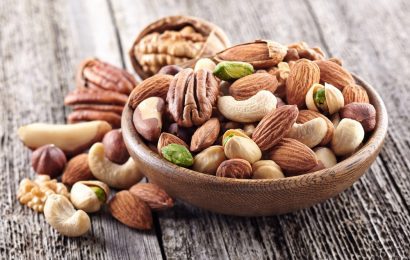Pain researcher Rebecca Sudore, MD, says, “Adults living with Type 2 diabetes are suffering from incredibly high rates of pain, at levels similar to patients living with cancer.” Sounds awful. But what can we do about it? Actually, quite a bit.
Let’s look at medications first. Because chronic pain involves emotions, thoughts, stress, general health, and the entire body, there are at least six different categories of drugs that can help with pain. They include: narcotics, anxiolytics (“tranquilizers”), antidepressants, anti-inflammatories, medicines for seizures, and alternative treatments.
With all those choices, nobody should have to live in severe pain. Unfortunately, many doctors know little about pain treatment and care even less. “I can’t see it or feel it,” they reason. “How bad can it be?” Doctors are often more likely to worry about patients’ “drug seeking” than they are about relieving their pain.
So it helps if people know their possible treatments and ask for them. Here’s a brief run-down:
• Narcotics (also called opioids) are derived from the opium plant or are chemical imitations of opiates. They include morphine, codeine, oxycodone, meperidine, methadone, and many, many more. They block receptors in brain cells that feel pain.
Narcotics can help people ignore or cope with pain signals, but they don’t calm the overactive pain nerves that send the chronic pain messages. Sometimes, they have to really knock you out before you get much pain relief. But for some people, narcotics are the best answer.
Unfortunately, narcotics have a bad rap, because users build up a tolerance to them. They can become addicted. Contrary to popular myth, these addictions are not that hard to break, if people have some other way of dealing with their physical and emotional pain. The difficult part is staying off the drug when you’re still hurting.
The legal sanctions and medical prejudice against narcotics keeps many people from getting relief. But it doesn’t hurt to ask.
Narcotics are sometimes used in combination with other classes of pain medicines. Side effects may include constipation, sleepiness, and difficulty urinating.
• Anxiolytics are drugs that calm anxiety and tension. They relax muscles and frequently reduce pain. They include benzodiazepines, such as alprazolam (Xanax) and diazepam (Valium), buspirone (Buspar), and herbals, such as chamomile, Saint-John’s-wort, and kava.
Anxiety and fear are major contributors to chronic pain, so if you notice extra anxiety or tension, you might consider these drugs.
• Anti-inflammatories are where most pain treatment should start. Inflammation is a chemical process, in which hormone-like chemicals called prostaglandins make nerves more sensitive to pain signals. Non-steroidal anti-inflammatory drugs (NSAIDs) block prostaglandins and reduce pain.
Older NSAIDs include aspirin, ibuprofen, and nabumetone (Relafen). Newer ones like celecoxib (Celebrex) and rofecoxib (Vioxx) made a multi-billion dollar splash in the 90’s, because they don’t cause stomach problems the way the older ones do. But as often happens, they turned out to cause worse problems, such as strokes. Now, they are not as widely used as the older ones.
Acetaminophen (Tylenol) is sometimes classed as an anti-inflammatory and sometimes not. It has only mild action against inflammation, but can help relieve pain.
• Anti-seizure medicines are often very good for chronic pain. Why? Because chronic pain is sometimes caused by oversensitive nerves. Seizures are the extreme case of hyperactive nerves, so medications for seizures can also turn down pain.
The most effective seizure drugs for pain are probably gabapentin (Neurontin and others) and pregabalin (Lyrica). These are widely prescribed for pain. According to Wikipedia, they are considered to have low potential for abuse or for causing dependence. Gabapentin is available as a generic, while pregabalin is not. But pregabalin may be more effective for many people.
Older anti-seizure drugs such as phenytoin (Dilantin), carbamazepine (Tegretol), and valproic acid (Depakene) can also reduce pain, although perhaps not as much as the newer ones. They are all cheap and available, but sometimes cause side effects including nausea, vomiting, headache, and dizziness.
• Since depression almost always goes along with chronic pain, antidepressants often help. Drugs prescribed for pain include the selective serotonin reuptake inhibitors (SSRIs), such as fluoxetine (Prozac and others) and paroxetine (Paxil and others).
Some pain specialists find different antidepressants more helpful. The older MAO inhibitors, such as nortriptyline (Pamelor and others) often substantially reduce pain. The newer serotonin–norepinephrine reuptake inhibitors (SNRIs) work for many people. The drugs venlafaxine (Effexor) and duloxetine (Cymbalta and others) have shown good results in pain studies.
These drugs may take several weeks to start working. Side effects can include blurred vision, drowsiness, dry mouth, constipation, and weight gain.
• Alternative agents also work for many people. Popular ones include the following:
Arnica. An herb that comes from the Mountain Daisy. Arnica relieves swelling and pain. It can be rubbed on the painful area or taken by mouth.
Cannabis. If you live in a medical marijuana state, you might look into the pain-relieving and muscle-relaxing effects of cannabis. They have been shown in a number of studies. Cannabis oil applied to the skin is said to have no mental effects. You don’t get high, but inflammation and pain are reduced.
Other nondrug approaches include magnesium supplements to relax muscles, Chinese herbal medicine, capsaicin (chili extract), and many others, some of which you can see here.
That’s just the medicines that can help your pain. I haven’t even talked about physical therapy approaches like exercise, electrical nerve blocks or stimulators, Anodyne Therapy, or many others I discussed here and here. And improving glucose control often makes pain go away, especially the pain of neuropathy. So don’t forget that. But what has worked for you?




